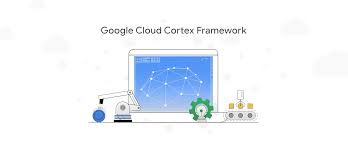Cortex Framework Integration with Salesforce (SFDC)
Cortex Framework: Integration with Salesforce (SFDC) This insight outlines the process of integrating Salesforce (SFDC) operational workloads into the Cortex Framework Data Foundation. By integrating Salesforce data through Dataflow pipelines into BigQuery, Cloud Composer can schedule and monitor these pipelines, allowing you to gain insights from your Salesforce data. Cortex Framework Integration with Salesforce explained. Prerequisite: Before configuring any workload integration, ensure that the Cortex Framework Data Foundation is deployed. Configuration File The config.json file in the Cortex Framework Data Foundation repository manages settings for transferring data from various sources, including Salesforce. Below is an example of how Salesforce workloads are configured: jsonCopy code”SFDC”: { “deployCDC”: true, “createMappingViews”: true, “createPlaceholders”: true, “datasets”: { “cdc”: “”, “raw”: “”, “reporting”: “REPORTING_SFDC” } } Explanation of Parameters: Parameter Meaning Default Value Description SFDC.deployCDC Deploy CDC true Generates Change Data Capture (CDC) processing scripts to run as DAGs in Cloud Composer. SFDC.createMappingViews Create mapping views true Creates views in the CDC processed dataset to show the “latest version of the truth” from the raw dataset. SFDC.createPlaceholders Create placeholders true Creates empty placeholder tables if they aren’t generated during ingestion, ensuring smooth downstream reporting deployment. SFDC.datasets.raw Raw landing dataset (user-defined) The dataset where replication tools land data from Salesforce. SFDC.datasets.cdc CDC processed dataset (user-defined) Source for reporting views and target for records processed by DAGs. SFDC.datasets.reporting Reporting dataset for SFDC “REPORTING_SFDC” Name of the dataset accessible for end-user reporting, where views and user-facing tables are deployed. Salesforce Data Requirements Table Structure: Loading SFDC Data into BigQuery The Cortex Framework offers several methods for loading Salesforce data into BigQuery: CDC Processing The CDC scripts rely on two key fields: You can adjust the CDC processing to handle different field names or add custom fields to suit your data schema. Configuration of API Integration and CDC To configure Salesforce data integration into BigQuery, Cortex provides the following methods: Example Configuration (settings.yaml): yamlCopy codesalesforce_to_raw_tables: – base_table: accounts raw_table: Accounts api_name: Account load_frequency: “@daily” Data Mapping and Polymorphic Fields Cortex Framework supports mapping data fields to the expected format. For example, a field named unicornId in your source system would be mapped to AccountId in Cortex with the string data type. Polymorphic Fields: Fields whose names vary but have the same structure can be mapped in Cortex using [Field Name]_Type, such as Who_Type for the Who.Type field in the Task object. Modifying DAG Templates You can customize DAG templates as needed for CDC or raw data processing. To disable CDC or raw data processing from API calls, set deployCDC=false in the configuration file. Setting Up the Extraction Module Follow these steps to set up the Salesforce to BigQuery extraction module: Cloud Composer Setup To run Python scripts for replication, install the necessary Python packages depending on your Airflow version. For Airflow 2.x: bashCopy codegcloud composer environments update my-composer-instance –location us-central1 –update-pypi-package apache-airflow-providers-salesforce>=5.2.0 Security and Permissions Ensure Cloud Composer has access to Google Secret Manager for retrieving stored secrets, enhancing the security of sensitive data like passwords and API keys. Conclusion By following these steps, you can successfully integrate Salesforce workloads into Cortex Framework, ensuring a seamless data flow from Salesforce into BigQuery for reporting and analytics. Like Related Posts Salesforce OEM AppExchange Expanding its reach beyond CRM, Salesforce.com has launched a new service called AppExchange OEM Edition, aimed at non-CRM service providers. Read more The Salesforce Story In Marc Benioff’s own words How did salesforce.com grow from a start up in a rented apartment into the world’s Read more Salesforce Jigsaw Salesforce.com, a prominent figure in cloud computing, has finalized a deal to acquire Jigsaw, a wiki-style business contact database, for Read more Service Cloud with AI-Driven Intelligence Salesforce Enhances Service Cloud with AI-Driven Intelligence Engine Data science and analytics are rapidly becoming standard features in enterprise applications, Read more







